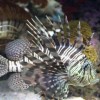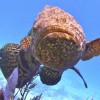 The new Florida 4-H Aquatic and Marine Ecosystems: Leader’s Activity Guide helps leaders address the 4-H Science Initiative and is part of the Environmental Sciences Framework, OUR NATURAL WORLD. This framework includes the basic premise that aquatic/marine environments are important in children’s lives, particularly to those children in Florida. The 4-H Aquatic and Marine Ecosystems curriculum provides an opportunity for young people to practice a variety of life skills while learning marine science concepts. The curriculum also utilizes science inquiry as a way for young people (9-14) to gain a deeper curiosity about the natural world. Written by Karen Blyler and Joy Jordan, and published by the UF Department of 4-H Youth Development, November 2014.
The new Florida 4-H Aquatic and Marine Ecosystems: Leader’s Activity Guide helps leaders address the 4-H Science Initiative and is part of the Environmental Sciences Framework, OUR NATURAL WORLD. This framework includes the basic premise that aquatic/marine environments are important in children’s lives, particularly to those children in Florida. The 4-H Aquatic and Marine Ecosystems curriculum provides an opportunity for young people to practice a variety of life skills while learning marine science concepts. The curriculum also utilizes science inquiry as a way for young people (9-14) to gain a deeper curiosity about the natural world. Written by Karen Blyler and Joy Jordan, and published by the UF Department of 4-H Youth Development, November 2014.
- Introduction
- Lesson 1: Aquatic and Marine Ecosystem Connections
- Lesson 2: Wetland Ecosystems: Freshwater Marshes and Swamps
- Lesson 3: Aquatic Ecosystems: Lakes, Springs, and Rivers
- Lesson 4: Coastal Ecosystems: Beach, Estuary, Marsh, and Swamp
- Lesson 5: Marine Ecosystems: Coral Reefs and Open Ocean
- Appendices: Glossary and Additional Resources
- Facilitator Evaluation

